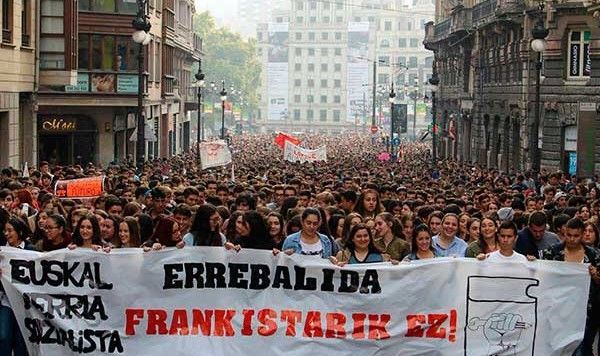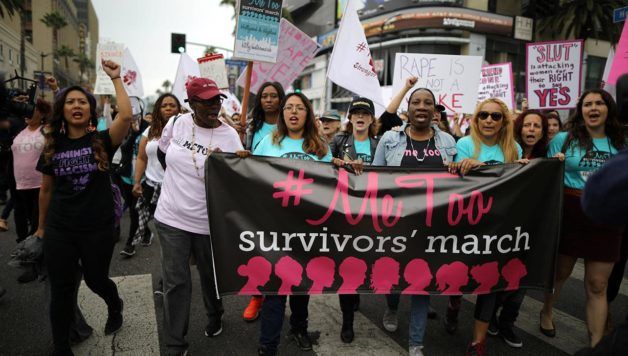In less than two months, the Bangladeshi masses have thrown off the yoke of two decades of dictatorial rule. Millions of students and working people overthrew the autocratic Sheikh Hasina regime in a political revolution, proving that mass struggle can win. Now, the question is: what will follow next?
The student-led movement that toppled the dictatorship was initially sparked by the reintroduction of a “quota” system that set aside 30% of government jobs for descendants of “liberation war heroes.” It represented nothing more than the systematic nepotism and corruption of the Bangladeshi ruling elite in a country where 18 million youth are unemployed.
But as the movement grew and repression increased, the demands broadened to include the resignation of former Prime Minister Hasina, one of the world’s most hated autocrats. Under her direction, the military and police shot and killed hundreds of unarmed protestors and imprisoned thousands. The massacre of August 4th, in which over 100 students were slaughtered, was the last straw. Thousands marched to Dhaka, the Bangladeshi capital, to demand Hasina’s immediate resignation. On August 5th, the dictator fled to New Delhi and millions flooded the streets in celebration.
In the days that have followed, a caretaker government has been set up by the military. Several student leaders have accepted leading positions in the new government. But it is crucial that Bangladeshi students, and the broader movement they’ve inspired, learn the lessons of the 2022 Sri Lankan movement that toppled two autocratic governments in two months but failed to fundamentally improve living and working conditions: without revolutionary organization and program, a new right-wing government was returned.
The real enemy of the movement is not only the Hasina regime, but decaying Bangladeshi capitalism itself. The movement should set up committees in the universities, factories and communities that have risen up against the dictatorship in order to sustain and democratically direct the ongoing struggle. It should link up with the struggle of the garment workers, whose heroic strike was brutally put down by the state last year. The movement should run independent candidates in the upcoming elections on a program based on the needs of the Bangladeshi masses: housing, healthcare, jobs and the end of oppression against minorities.
South Asian Capitalism In Crisis
The overthrow of Sheikh Hasina takes place in the context of deep instability for capitalism globally and especially in South Asia. The general strikes and mass protests of the farmers movement in India of 2020–21 delivered a powerful blow to the reactionary Modi regime and blocked its attempt to privatize the agricultural sector. Mass protests swept Pakistan in 2023 against searing electricity and fuel price increases that were implemented at the behest of the IMF. Increasingly, young people in the neocolonial world are faced with two choices: migrate or fight.
In Bangladesh, the youth directed their anger at the Awami League, the party of Sheikh Hasina that has mostly held power since the country’s independence from Pakistan in 1971. But they’re also skeptical of all the rotten political choices on offer. The fraudulent elections carried out by the ruling Awami League in January illustrate the extreme decay of democratic institutions. Both the main Stalinist and reformist left parties have failed to offer an alternative and, scandalously, have refused to independently challenge the Awami League.
It’s not hard to see why there is hardly any faith in the establishment parties. Youth unemployment is at a staggering 40%. The private sector is dominated by the highly exploitative garment industry, which makes up 90% of Bangladeshi exports. The garment unions have a tradition of militancy, but over the last two decades their Stalinist leaderships have accepted backbreaking conditions and pay.
The exploitative terms imposed on the Bangladeshi masses by imperialism have played no small part in igniting the anger behind this movement. A 2023 loan issued by the IMF imposed a crippling program of austerity: greater privatization of state-owned corporations, cancellation of crucial fuel and electricity subsidies and tax increases on workers. Any new Bangladeshi regime accepting these conditions will continue its predecessor’s attacks on the working class and poor.
Role Of Students
The Bangladeshi mass insurrection is being called the “first Gen Z revolution”. It is notable that the struggle has been led mainly by university students, many of whom have never lived under a different regime.
Students have played a key role in unifying the movement, and society in general, against religious divisions. Some Islamist groups have used the cover of the protests to attack the Hindu minority, but students from all faiths have played a crucial role in countering this. Students, along with many Muslim workers, have set up community watch groups to defend Hindu temples and other minorities.
Youth can play a major role in struggle on their own, but a movement becomes exponentially stronger when the working class throws its full weight behind it. This was seen when, ahead of the mass march to Dhaka, students called for tax and utility payment boycotts. Students also called for a shutdown of all factories and public transit, a call that was broadly heeded by the working class. In the mass protests since the quota law was reimposed, teachers, rickshaw drivers, factory workers and others have joined students in the streets.
The Path Forward
The fighting Bangladeshi students were correct to build their movement independent of the failed establishment parties, including the parties of the so-called opposition. It’s also significant that they led the uprising without illusions in any imperialist powers to come to their aid, as has been a feature of some movements like the Hong Kong democracy movement of 2019. And it was critical that they didn’t retreat when the Supreme Court hastily scrapped the quota system within weeks of the protests, but instead used the increasing momentum behind them to demand the Prime Minister’s resignation.
But the task facing the students and workers of Bangladesh is far from complete. The student leaders — Nahid Islam, Asif Mahmud and others — who have taken on roles as ministers, are mistakenly legitimizing the interim government. Muhammad Yunus, the head of the interim government, won a Nobel Prize in Economics and developed a reputation as a humanitarian for his pioneering of “micro credits”. But, as we pointed out at the time of his winning the Nobel Prize, Yunus’s program served to preserve the big capitalist institutions like the IMF and World Bank by creating “the illusion that everybody can have a chance now to release themselves from poverty.” The movement needs to organize for the cancellation of all IMF and foreign loans. Take into public ownership the telecommunications companies, banks, garment producers and other major corporations. Launch a jobs program based on the state ownership of vast swathes of the economy for the millions of unemployed youth and poor. All political prisoners must be released immediately.
The Bangladeshi youth and working class should build a mass party out of this struggle based on the unions, and compete against the pro-capitalist parties in the upcoming elections. But as long as the power of the capitalists, imperialism and the military remains, the danger of counter revolution and a new authoritarian regime is still there. What is necessary for the final victory of Bangladeshi students and workers is the revolutionary overthrow of capitalism and the construction of a socialist society run democratically by the working class.




